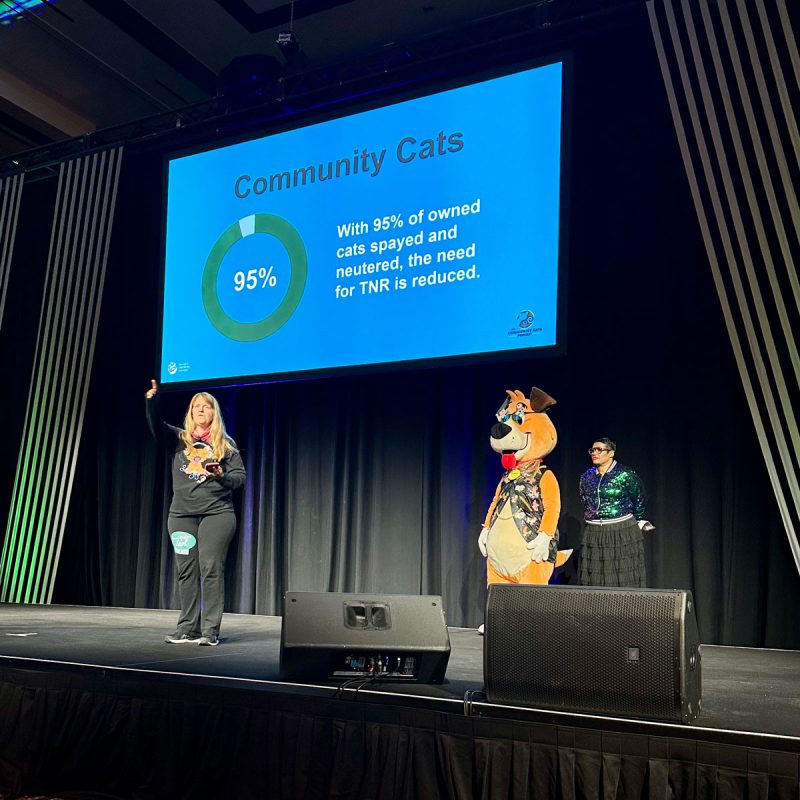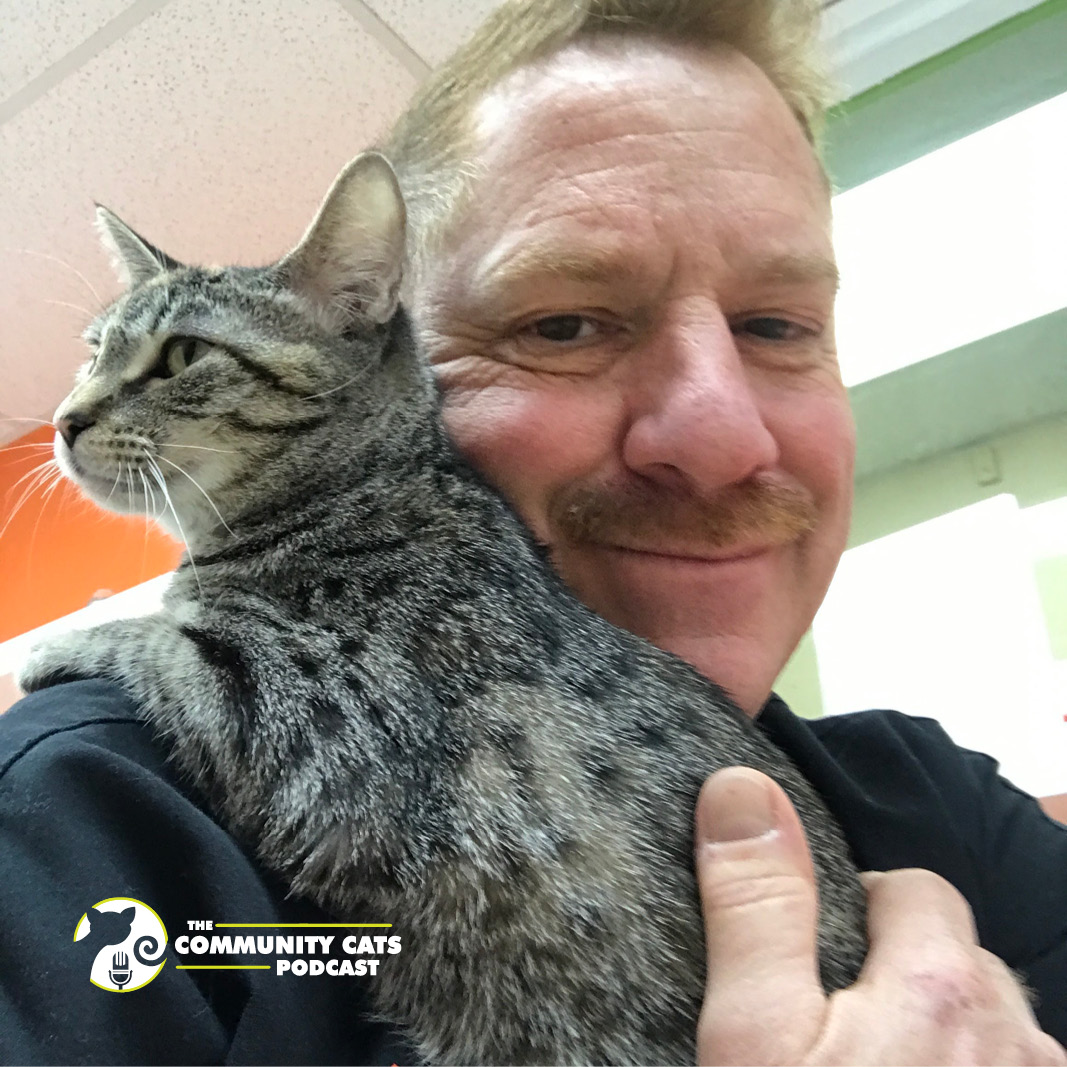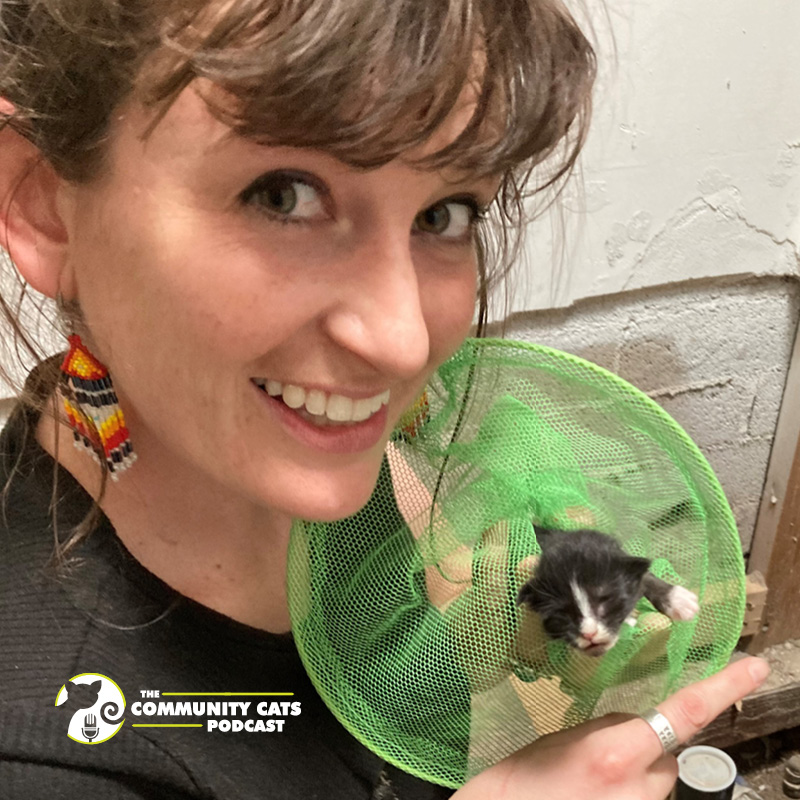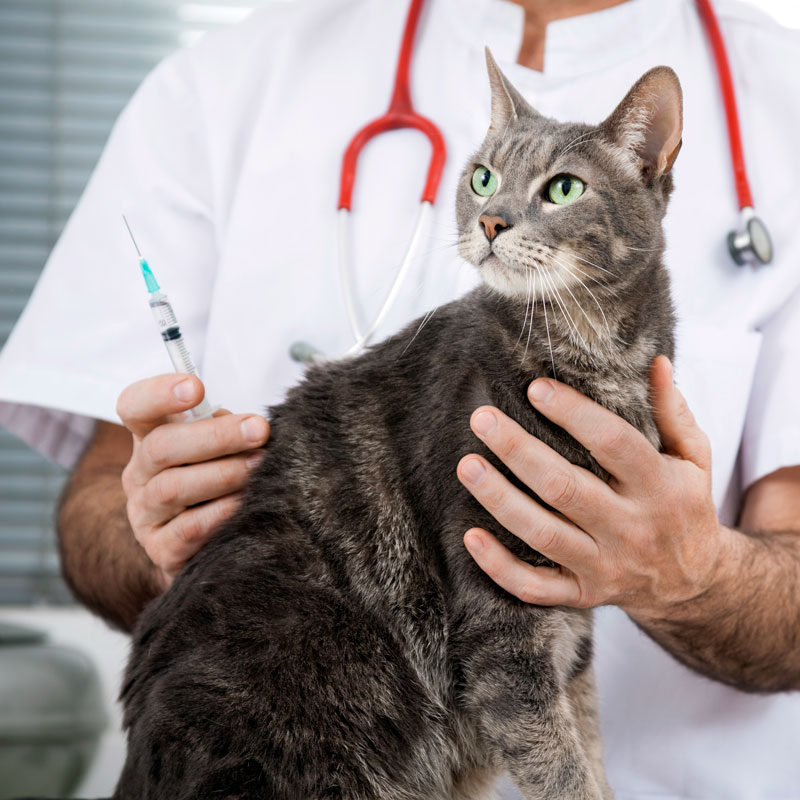
Contributed by Devon Smith, Executive Director, League for Animal Welfare, and panelist for Real World FeLV Success during Online Feline Leukemia Day, this Saturday, July 16, 2022
Want more FeLV content? Register for Online Feline Leukemia Day on July 16. You’ll hear from Devon and so many others who are working to promote the best possible care for FeLV+ felines.
As is so often the case, it was a total cat amateur (my husband …) who drew my attention to the unkindness I was perpetrating on my own feline leukemia cats.
I had adopted my first feline leukemia cat in 2009 – a stray cat in a colony I was TNRing, the vet recommended a test because Itty Bitty was too jaundiced and underweight to spay. When she tested positive, Itty Bitty came home with me, joining 10 (!) non-FeLV kitty brothers and sisters with whom I already shared my house. Itty Bitty lived in my bedroom with me for the year that I had her – healthy, relatively happy, but always separated from the other cats.
Many FeLV cats followed in her wake – I usually had 2 or 3 in my home, but always cordoned off in a separate part of the house to avoid transmission to my non-FeLVers.
In 2016, my FeLV cat Agnes died, leaving very fun, very social FeLV cat Buffalo alone in the FeLV section of our house. My husband said to me, pleadingly and with puppy eyes, “can’t we please let Buffalo play with the other [non-FeLV] cats?”
He was met with a haughty dismissal (partially because he’s my husband, and partially because he’s a cat newbie, so obviously he had no idea what he was talking about!). NO, you cannot combine FeLV and non-FeLV cats. Pffftt. Amateur.
But then I thought about it for a second. I mean, could we? Was it really so outrageous – if we vaccinate the non-FeLVers, why couldn’t we give it a try?
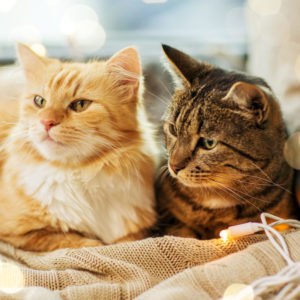 And so, my house became ground zero for our little FeLV experiment in 2016. We vaccinated all of our non-FeLV cats with the recommended course – two vaccines (Nobivac’s feline 2-FeLV), one month apart, and an additional two weeks after the second vaccine to ensure full efficacy. And then we allowed Buffalo to live with – and romp and play and snuggle with – our other ten cats. He was in heaven.
And so, my house became ground zero for our little FeLV experiment in 2016. We vaccinated all of our non-FeLV cats with the recommended course – two vaccines (Nobivac’s feline 2-FeLV), one month apart, and an additional two weeks after the second vaccine to ensure full efficacy. And then we allowed Buffalo to live with – and romp and play and snuggle with – our other ten cats. He was in heaven.
The plan wasn’t entirely without researched merit.
Recent studies had shown that FeLV vaccines are 90-100% effective against persistent FeLV viremia – the “active” form of FeLV, that leads to shortened lifespans and FeLV-related deaths.[1]
We were careful to choose the most efficacious vaccine – inactivated FeLV vaccines showed higher efficacy (as much as 100%, in two studies); but recombinant vaccines showed as little as 20-40% efficacy against persistent viremia.[2][3]
But we knew there was still some risk.
A 90-100% efficacy sounds good. But that 10% variance certainly makes a difference, when you’re talking about your beloved pet. Moreover, the research studies have been small and contrived – using only pools of 10-20 cats; and focusing on young kittens who have direct and acute exposure. Could we put stock in such limited research? In a real-life scenario that, in so many ways, did not mimic the conditions of these studies?[4] We had to balance those questions and risks with Buffalo’s (and later Herschel’s, Bubba’s, and Emmie’s) quality of life – the ability of our FeLV cats to enjoy the company of other cats, and the freedom to roam the whole household.
We have since lost all of our FeLV kitties. Buffalo succumbed to FeLV in 2018 (2 years after adoption); Bubba in 2018 (6 months after adoption); Herschel in 2020 to stomach cancer (4 years after adoption); and Emmie in 2022, to an undiagnosed illness that caused painful paralysis (4 years after adoption). But from 2016-2022, none of our other, now-vaccinated non-FeLV cats, contracted the virus.
This DIY FeLV experiment has changed the way I do sheltering: the shelter I currently lead, the League for Animal Welfare in Batavia, OH, now allows FeLV cats to be adopted into homes with non-FeLV cats, with proof of appropriate vaccination against Feline Leukemia. Though this change has been small so far – only two families within the year of its implementation have taken advantage of this program, adding a FeLV kitty to a home with a non-FeLV kitty – we hope it will help encourage other shelters to consider the same.
So much of our understanding of Feline Leukemia has changed in the last decade, for the better. Now, many shelters are saving FeLV cats and watching them lead healthy, happy, wonderful lives for years, post-adoption – cats that, just 10 years ago, would have been euthanized based simply on a little blue line on a test. But shelters often take longer to find homes for FeLV cats, monopolizing valuable space at a time when there are still so many cats in need of sheltering. Imagine if we could exponentially expand the pool of adopters by de-stigmatizing FeLV and non-FeLV cats living together! We could be one step closer to making it easier for all shelters to save these vulnerable little lives.
[1] “Comparative Efficacy of Feline Leukemia Virus Inactivated Whole Virus Vaccine and Canarypox Virus-Vectored Vaccine by Modern Molecular Assays and Conventional Parameters,” M. Patel et al, 2015. And “Efficacy of an Inactivated FeLV Vaccine Compared to a Recombinant FeLV Vaccine in Minimum Age Cats Following Virulent FeLV Challenge,” K. Stuke, et al; 2013. And “Immunogenicity and Efficacy of a Commercial Feline Leukemia Virus Vaccine,” “N. Pedersen, 1993. Journal of Veterinary Internal Medicine: 1993; 7:34-39.
[2] “Comparative Efficacy of Feline Leukemia Virus Inactivated Whole Virus Vaccine and Canarypox Virus-Vectored Vaccine by Modern Molecular Assays and Conventional Parameters,” M. Patel et al, 2015. And “Efficacy of an Inactivated FeLV Vaccine Compared to a Recombinant FeLV Vaccine in Minimum Age Cats Following Virulent FeLV Challenge,” K. Stuke, et al; 2013.
[3] Nobivac’s FeLV vaccine is an example of an inactivated vaccine; PureVax’s FeLV vaccine is a recombinant vaccine.
[4] Our 10 cats were all adults, ranging in age from a couple of years to 16 years; and several had compromised immune systems from FIV. They would also be exposed to the virus consistently over a period of years – not a single, acute episode of exposure.
About Devon Smith
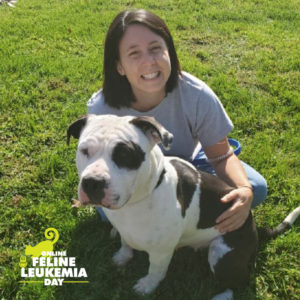 Devon Smith is the Executive Director of the League for Animal Welfare, a limited-admission shelter that takes in 1600 cats and dogs a year. Smith has been in animal welfare for two decades and has had the good fortune to work, volunteer, and learn in organizations in the northeast, southeast, and Midwest. Smith has led both open- (Saint Frances Animal Center; Georgetown, SC) and limited-admission (League for Animal Welfare; Batavia, OH) shelters; a high-volume spay/neuter clinic (Ohio Alleycat Resource; Cincinnati, OH); and a trap/neuter/return group (Michiana Feral Cat Initiative; South Bend, IN). She gets particularly jazzed by projects that are collaborative and focused on systemic issues in sheltering that affect the most vulnerable populations. Smith’s current focus is on expanding access to care and adoption for cats with FIP and Feline Leukemia, and improving enrichment and behavior modification programs for large dogs.
Devon Smith is the Executive Director of the League for Animal Welfare, a limited-admission shelter that takes in 1600 cats and dogs a year. Smith has been in animal welfare for two decades and has had the good fortune to work, volunteer, and learn in organizations in the northeast, southeast, and Midwest. Smith has led both open- (Saint Frances Animal Center; Georgetown, SC) and limited-admission (League for Animal Welfare; Batavia, OH) shelters; a high-volume spay/neuter clinic (Ohio Alleycat Resource; Cincinnati, OH); and a trap/neuter/return group (Michiana Feral Cat Initiative; South Bend, IN). She gets particularly jazzed by projects that are collaborative and focused on systemic issues in sheltering that affect the most vulnerable populations. Smith’s current focus is on expanding access to care and adoption for cats with FIP and Feline Leukemia, and improving enrichment and behavior modification programs for large dogs.

